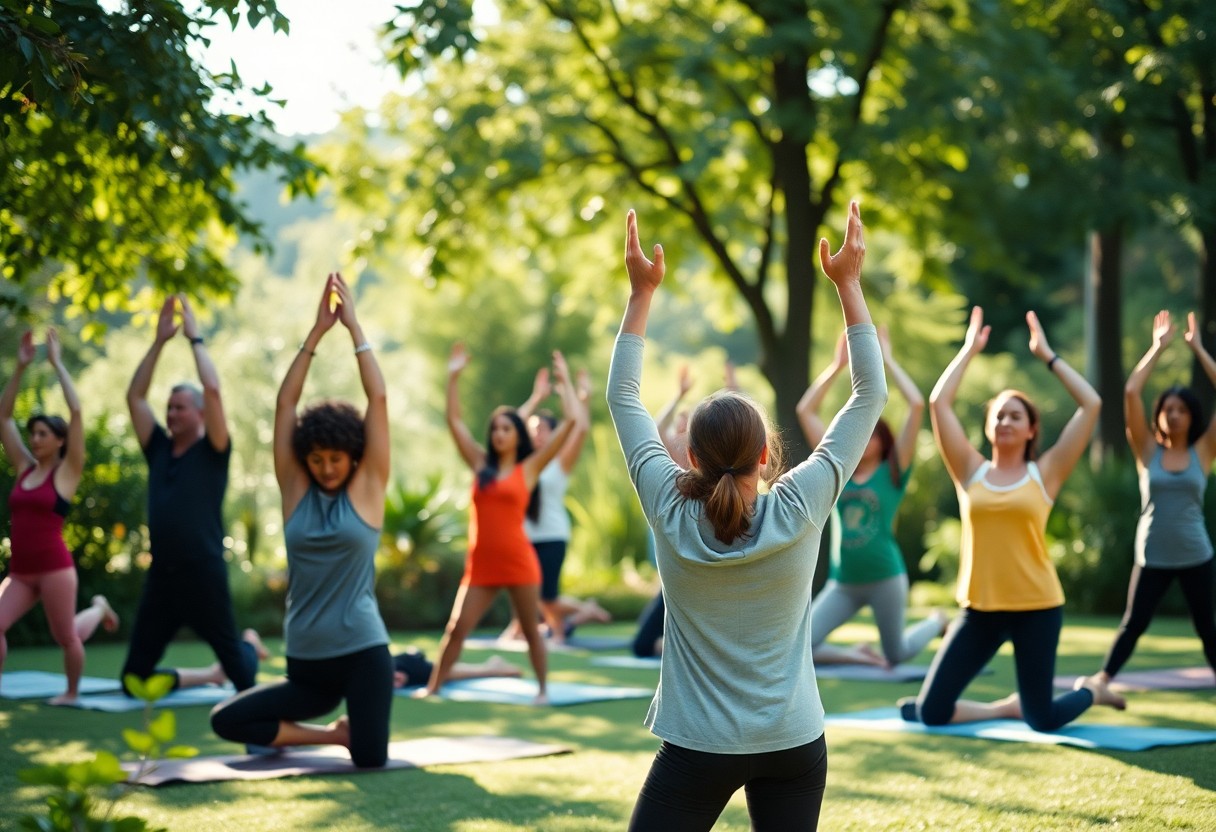There’s a growing recognition of the importance of self-care for achieving holistic health optimization. By designing effective self-care routines, you can enhance your physical, mental, and emotional well-being. This comprehensive approach empowers you to create a balanced lifestyle that aligns with your personal health goals. In this blog post, you will discover practical strategies and insights to help you craft self-care practices tailored to your unique needs, ultimately fostering a healthier, more fulfilled version of yourself.
Key Takeaways:
- Personalization: Tailor your self-care routine to suit your unique needs and preferences for optimal engagement.
- Balance: Incorporate a mix of physical, emotional, and mental practices to achieve a holistic approach to health.
- Consistency: Establish regular habits and schedules for your self-care activities to foster long-term benefits.
- Awareness: Regularly assess your mental and physical state to adjust your routine effectively and maintain alignment.
- Community: Engage with supportive networks or groups to enhance motivation and share experiences in your self-care journey.
- Mindfulness: Practice mindfulness techniques to cultivate presence and enhance your connection with your self-care activities.
- Variety: Explore different practices and techniques to keep your self-care routine fresh and exciting, preventing burnout.
Understanding Holistic Health
Definition of Holistic Health
To embrace the concept of holistic health, you must recognize that it extends beyond mere physical well-being. Holistic health is an integrative approach that takes into account the emotional, mental, and spiritual dimensions of well-being, alongside physical health. This multifaceted perspective acknowledges that all aspects of your life are interconnected; therefore, neglecting one area can inadvertently affect the others. By focusing on a holistic model, you empower yourself to foster harmony within your entire being, paving the way for optimal health and a balanced life.
To fully appreciate the essence of holistic health, consider how various factors influence your wellness. Stress, emotional fulfillment, social interactions, and lifestyle choices play significant roles in shaping your overall health status. By understanding these interrelationships, you can develop a more comprehensive self-care routine that addresses not just the symptoms of an ailment but the root causes behind them. This proactive approach enables you to cultivate a lifestyle that promotes sustained wellness and personal growth.
Benefits of a Holistic Approach
Holistic practices offer a range of benefits that can significantly enhance your quality of life. By adopting a holistic approach, you are more likely to achieve balance in your life, leading to improved mental clarity and emotional stability. This way of thinking encourages you to become more aware of your body’s signals and your emotional needs, refining your self-care strategy in a manner that resonates with your unique circumstances. As a result, you’ll find that physical symptoms may diminish as you nurture other aspects of your health and well-being.
But the advantages of embracing a holistic approach extend beyond immediate relief from discomfort or stress. Engaging in holistic practices can instill a deeper sense of self-awareness, empowering you to make more informed choices regarding your health. This shift not only facilitates a healthier lifestyle but also fosters resilience against future challenges. By prioritizing balance in all areas of your life, you are better equipped to handle stressors and maintain a state of well-being that transcends traditional health paradigms.
Components of Effective Self-Care
Now, effective self-care comprises various components that work together to promote holistic health. These elements go beyond mere indulgence; they serve vital roles in balancing your physical, emotional, and mental well-being. By integrating these components into your daily routine, you can establish a foundation for a more vibrant and resilient life. Each aspect contributes to a greater understanding of your personal needs and priorities, allowing you to cultivate habits that support your overall wellness journey.
Physical Self-Care
Against the backdrop of your busy life, prioritizing physical self-care is necessary for maintaining your body’s functionality and strengthening your overall health. This includes activities such as exercise, nutrition, and sleep hygiene. Engaging in regular physical activity, whether it’s a brisk walk, yoga, or dancing, helps not only in managing weight but also boosts your mood and energy levels. Additionally, nourishing your body with a balanced diet rich in fruits, vegetables, and whole grains can enhance your immune system, while adequate sleep is critical for recovery and cognitive functions. Developing a personalized approach to these physical self-care practices can greatly enhance your quality of life.
Emotional and Mental Self-Care
Behind the scenes of your everyday life, emotional and mental self-care significantly influences your overall well-being. This component entails recognizing and managing your feelings, developing resilience, and engaging in activities that promote mental clarity and relaxation. Incorporating practices such as mindfulness, journaling, or seeking therapy allows you to express emotions healthily, creating a safe space to process your thoughts. Moreover, surrounding yourself with supportive relationships can reinforce your emotional well-being, providing you with the encouragement needed to navigate life’s ups and downs.
It’s important to recognize that emotional and mental self-care is an ongoing process that requires both awareness and action. Taking time to check in with yourself, identifying stressors, and allowing yourself to unwind through meditation or creative pursuits can lead to improved emotional stability. By building a robust toolkit of strategies tailored to your personal needs, you can foster a more resilient mindset that empowers you to face challenges with confidence and grace.
Designing Your Self-Care Routine
Unlike a one-size-fits-all approach, an effective self-care routine is highly personalized and should reflect your unique lifestyle, preferences, and needs. To create a routine that truly serves you, it’s important to consider various aspects of your life, including your physical, mental, emotional, and spiritual well-being. Take some time to explore activities that resonate with you, whether it’s enjoying a leisurely walk, journaling your thoughts, engaging in a new hobby, or practicing mindfulness techniques. When you understand what brings you genuine joy and peace, you can begin to formulate a well-rounded self-care routine.
Assessing Individual Needs
Behind every self-care routine lies an assessment of your individual needs. Begin by reflecting on your current state of well-being and identifying areas that require attention. Are you feeling physically drained, mentally overwhelmed, or emotionally depleted? Gathering insight into these aspects of your life can guide you in choosing self-care activities that are both relevant and beneficial. Consider seeking feedback from close friends or family members, as they may provide valuable perspectives on your needs that you might not see yourself.
Setting Realistic Goals
On your journey to crafting an intricate self-care routine, setting realistic goals plays a fundamental role. It’s important to establish achievable objectives that you can realistically incorporate into your daily life. Begin by breaking down larger aspirations into smaller, actionable steps that fit comfortably into your schedule. Whether it’s dedicating an extra 15 minutes to meditation each day or committing to a weekly digital detox, these tangible goals will serve as gentle reminders to prioritize yourself without feeling overwhelming.
Also, consider the importance of flexibility within your goal-setting framework. Life is dynamic, and the demands on your time and energy can fluctuate. By allowing yourself the space to adapt your goals according to your evolving circumstances, you ensure that your self-care routine remains a supportive and enriching aspect of your life, rather than another source of stress.
Incorporating Mindfulness and Relaxation Techniques
Your self-care routine can greatly benefit from integrating mindfulness and relaxation techniques, which promote a deeper sense of well-being. These practices not only enhance your mental health but also contribute to physical wellness by reducing stress and anxiety levels. When you cultivate moments of mindfulness, you’re able to focus more acutely on the present, leading to greater clarity and a more peaceful state of mind. Consider allocating specific times throughout your day to engage in these techniques, whether it’s first thing in the morning, during a lunch break, or right before bed. By doing so, you create intentional intervals for relaxation that can fill your life with balance and contentment.
Meditation and Breathing Exercises
By incorporating meditation and breathing exercises into your self-care routine, you can create a powerful practice that grounds you and enhances your overall health. Meditation encourages you to observe your thoughts without judgment, enabling you to let go of mental clutter and connect with your inner self. Similarly, controlled breathing exercises can help regulate your body’s stress response, allowing for more fluid relaxation. Consider starting with just a few minutes daily and gradually increasing the duration as you become more comfortable. This practice not only calms your mind but also improves cognitive function and emotional resilience over time.
Nature and Connection to Environment
Across the globe, people are recognizing the power of nature in enhancing holistic health. Being in natural surroundings encourages a reconnection with your environment, which in turn positively affects your mood and overall well-being. Whether it’s through a leisurely walk in a park, hiking in the hills, or simply tending to a garden, immersing yourself in the beauty of nature allows you to unplug from everyday stressors and appreciate the moment. This reconnection fosters appreciation and mindfulness that can truly enhance your mental state, making you feel more grounded and peaceful.
With each encounter in nature, you have the opportunity to breathe in fresh air and experience the sights, sounds, and smells that every season brings. These experiences can aid in reducing feelings of depression and anxiety, as they encourage you to slow down and appreciate the present. Exploring natural settings provides not only relaxation but also a vibrant space to recharge your creative energies, leading to a more fulfilled life. Consider adding nature walks or outdoor mindfulness sessions to your self-care routine to bring in this refreshing connection to your environment.
Nutrition and Self-Care
To achieve holistic health, nutrition plays a fundamental role in your self-care routine. The food you consume directly impacts your physical well-being, mental clarity, and emotional stability. Prioritizing a diet rich in whole, unprocessed foods not only provides the necessary nutrients your body requires but also enhances your energy levels and mood. Understanding the connection between nutrition and self-care can empower you to make better dietary choices that lead to optimal health outcomes.
Balanced Diet for Optimal Health
About creating a balanced diet for optimal health, it is necessary to ensure you are consuming a wide variety of nutrients. This includes incorporating fruits, vegetables, whole grains, lean proteins, and healthy fats into your daily meals. Each food group brings unique benefits to your body and works synergistically to support multiple systems. A well-rounded diet helps you maintain stable energy levels throughout the day, promotes better sleep quality, and fosters an overall sense of well-being.
Superfoods and Their Benefits
On the topic of superfoods, these nutrient-dense foods provide exceptional health benefits and can significantly enhance your self-care regimen. Incorporating items such as berries, leafy greens, nuts, and seeds into your diet can lead to improved immune function, reduced inflammation, and increased longevity. Superfoods are often loaded with vitamins, minerals, and antioxidants that not only support physical health but also bolster mental clarity and mood regulation.
Even small additions of superfoods to your meals can make a substantial difference in your overall health. For instance, incorporating chia seeds into your smoothies or adding kale to your salads can help you reap the benefits of these powerhouse ingredients. By exploring various superfood options, you can create diverse and enjoyable meal plans while supporting your holistic health objectives.

Movement and Physical Activity
For many, incorporating movement and physical activity into daily life is vital for maintaining holistic health. Engaging in regular exercise can enhance both your physical and mental well-being, providing you with increased energy levels, improved mood, and better overall health. By consciously choosing various forms of movement, you can create a routine that suits your lifestyle while being beneficial to your body. Understanding different types of exercise can help you make informed decisions that align with your wellness goals.
Types of Exercise for Wellbeing
Above all, it is vital to recognize that various types of exercise serve different purposes. Each category can contribute uniquely to your physical and mental vitality. The following table outlines several types of exercise, their benefits, and examples to help you tailor your routine:
| Type of Exercise | Benefits |
|---|---|
| Aerobic | Improves cardiovascular fitness and increases stamina. |
| Strength Training | Builds muscle mass and boosts metabolism. |
| Flexibility | Enhances range of motion and decreases injury risk. |
| Balance | Improves stability and prevents falls. |
| Meditative Movement | Enhances mental clarity and reduces stress levels. |
- Choose a variety of exercises to keep things interesting.
- Listen to your body and adjust intensity as needed.
- Incorporate social activities, such as group classes, to boost motivation.
- Set realistic and achievable goals to maintain engagement.
- Ensure to include rest days for recovery.
This multifaceted approach to exercise can keep you engaged and energized, ultimately promoting a comprehensive self-care routine.
Creating a Sustainable Workout Plan
Below, it is vital to establish a sustainable workout plan that seamlessly fits into your lifestyle. Start by assessing your current fitness level and available time, then set clear, achievable goals that inspire you to stay committed. It is often beneficial to schedule your workouts in advance, treating them as important appointments that you cannot miss. Aim for a balance between various types of exercise, ensuring you incorporate aerobic, strength, flexibility, and relaxation techniques.
Another effective strategy to make your workout plan sustainable is to regularly evaluate and adjust your routine based on your progress and life changes. As your fitness levels improve or your schedule evolves, be willing to modify your plan to continue challenging yourself without feeling overwhelmed. This adaptability is key to long-term success in maintaining a healthy lifestyle that prioritizes movement and physical activity.
To wrap up
With these considerations in mind, you can begin crafting effective self-care routines that promote holistic health optimization. Start by assessing your physical, emotional, and mental needs, and prioritize activities that resonate with you personally. Incorporate a mix of practices such as mindfulness, exercise, healthy eating, and adequate rest to create a balanced approach that addresses every aspect of your well-being. Scheduling these activities into your daily or weekly routine will help ensure that you are consistently prioritizing self-care in your life.
Additionally, don’t hesitate to adjust your routines as needed to align with your evolving goals and circumstances. You may find that some practices work wonderfully at certain times and not at others. Stay flexible and attentive to your body’s and mind’s signals. By making self-care a dynamic part of your life, you empower yourself to better manage stress, enhance your emotional resilience, and maintain overall well-being, creating a sustainable foundation for a healthier, happier you.










